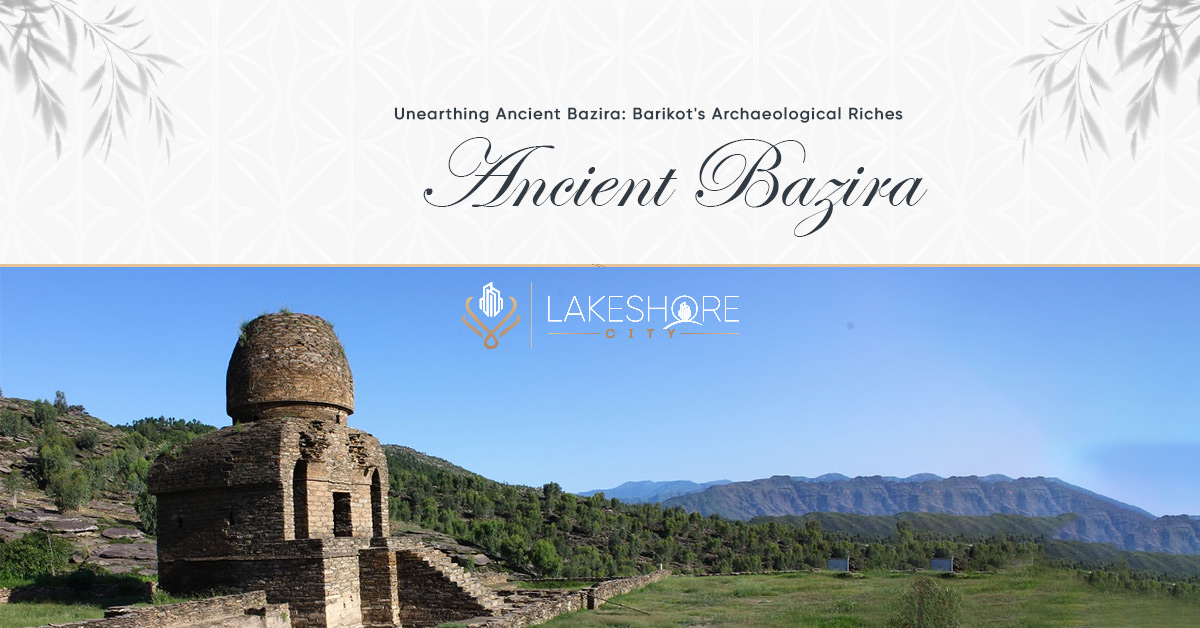Introduction to Ancient Bazira
The ancient Bazira of Alexander the Great is a site of exceptional archeological significance near Barikot, Swat. Extant archeological remains from various periods in the area’s prehistoric history are visible reminders of those times. This area contains remnants of fortifications built by the Achaemenians, the Indo-Greeks, the Kushans, the Sasanians, the Hindu Shahi, the Turk-i-Shahi, and the Ghaznavid.
Sir Aurel Stein’s Exploration
The British-Hungarian archeologist Sir Aurel Stein in 1926 was the first to explore this location. Burger and Wright hurriedly excavated it after his visit.
At Bazira in Barikot Swat, a rare temple from the Turk-i-Shahi era that dates to the 7th century was found on the summit of Ghwandai Mount. This temple was founded in collaboration with the Khyber Pakhtunkhwa Directorate of Archaeology by the Italian Archaeological Mission in Pakistan. It was constructed in 700 CE. At that time, Tegin Shah Khurasan, a well-known Turk-i-Shahi king from Kabul, was the father of From Kesar, a monarch who controlled Uddiyana (Swat).
The temple was restored and maintained until the Hindu Shahi period began in the early half of the 11th century. A Hindu Shahi inscription discovered at Barikot in the late 19th century and kept in the Lahore Museum also refers to the temple.
The city of Alexander the Great is another name for the ancient Bazira. The discovery was made recently at Barikot-Swat during excavations. Alexander the Great is thought to have traveled to Swat in 326 BCE with his troops and won a battle in the Odigram region.
Conclusion
Then, he built a fort and a walled city called Bazeera. At Barikot, inhabited from the fourth century to the Ghaznavid era, remnants of a small urban center and a fortification were discovered. Along with traces of the medieval Dardic settlement from the 12th to the 15th century CE, scattered Ghaznavid relics have also been found. The Yousafzai tribe, residing in the Swat, Swabi, and Mardan areas, eventually took control of these.
Questions and Answers
Q1. What historical periods and rulers left their mark on Barikot’s archaeological remains?
Ans. Barikot’s archaeological remains bear the influences of Achaemenians, Indo-Greeks, Kushans, Sasanians, Hindu Shahi, Turk-i-Shahi, and Ghaznavid rulers across various historical periods.
Q2. Who were the key archaeologists involved in the exploration and excavation of Bazira?
Ans. The pioneering exploration was led by British-Hungarian archaeologist Sir Aurel Stein in 1926, followed by subsequent excavations by Burger and Wright.
Q3. What is the significance of the 7th-century Turk-i-Shahi temple, and who were its notable figures?
Ans. The 7th-century Turk-i-Shahi temple holds historical significance and was constructed during the reign of Tegin Shah Khurasan, a Turk-i-Shahi king from Kabul, in collaboration with the Khyber Pakhtunkhwa Directorate of Archaeology.
Q4. How did the Hindu Shahi period contribute to the temple’s history?
Ans. The temple was maintained during the Hindu Shahi period, which began in the early half of the 11th century, and a Hindu Shahi inscription from Barikot references the temple.
Q5. What evidence supports the identification of Bazira as the city of Alexander the Great?
Ans. Recent excavations in Barikot have identified Bazira as the city of Alexander the Great, supported by historical accounts of his arrival in Swat in 326 BCE, where he built a fort and walled city.
Q6. What are the key findings related to urban centers and settlements in Barikot?
Ans. Barikot has revealed remnants of small urban centers, medieval Dardic settlements from the 12th to the 15th century CE, and traces of the Ghaznavid era.
Q7. How did the Yousafzai tribe eventually gain control of the area?
Ans. The Yousafzai tribe, residing in the Swat, Swabi, and Mardan areas, eventually gained control of Barikot and its surrounding regions.
Q8. What role did Alexander the Great play in Swat’s history during his visit in 326 BCE?
Ans. Alexander the Great visited Swat in 326 BCE, won a battle in the Odigram region, and built a fort and walled city, now identified as Bazira, in Barikot.
Our Featured Article:
Read More: Asalha Puja Celebration in Gandhara: Time and Buddhism
Don’t miss the chance to invest with Lakeshore! Secure your investment today by investing your financial investment with Lakeshore in the following available options like Lakeshore City, Lakeshore Club, and Lakeshore Farms.
For More updates, please Contact +92 335 7775253 or visit our website https://lakeshorecity.com/
Lakeshore City is the upcoming elite lifestyle at Khanpur Dam. Offering no parallel amenities for the members and owners of distinguished farmhouses.
Become Part of Luxurious Lifestyle
Contact: 0335 7775253



